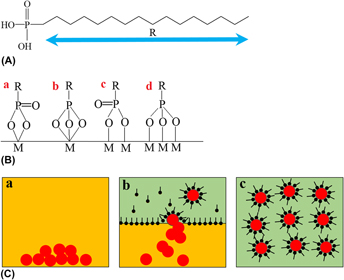Crossref Citations
This article has been cited by the following publications. This list is generated based on data provided by
Crossref.
Chen, R.
Wang, Z.Z.
Sahu, R.P.
Puri, I.K.
and
Zhitomirsky, I.
2018.
Influence of molecular structure of extractor molecules on liquid-liquid extraction of oxide particles and properties of composites.
Ceramics International,
Vol. 44,
Issue. 13,
p.
15714.
Chen, Ri
Puri, Ishwar K.
and
Zhitomirsky, Igor
2018.
High areal capacitance of FeOOH-carbon nanotube negative electrodes for asymmetric supercapacitors.
Ceramics International,
Vol. 44,
Issue. 15,
p.
18007.
Milne, J.
and
Zhitomirsky, I.
2018.
Application of octanohydroxamic acid for liquid-liquid extraction of manganese oxides and fabrication of supercapacitor electrodes.
Journal of Colloid and Interface Science,
Vol. 515,
Issue. ,
p.
50.
Silva, R.M.E.
Poon, R.
Milne, J.
Syed, A.
and
Zhitomirsky, I.
2018.
New developments in liquid-liquid extraction, surface modification and agglomerate-free processing of inorganic particles.
Advances in Colloid and Interface Science,
Vol. 261,
Issue. ,
p.
15.
Chen, Ri
Yu, Miao
Sahu, Rakesh P.
Puri, Ishwar K.
and
Zhitomirsky, Igor
2020.
The Development of Pseudocapacitor Electrodes and Devices with High Active Mass Loading.
Advanced Energy Materials,
Vol. 10,
Issue. 20,
Zhu, Xi
2022.
Recent advances of transition metal oxides and chalcogenides in pseudo-capacitors and hybrid capacitors: A review of structures, synthetic strategies, and mechanism studies.
Journal of Energy Storage,
Vol. 49,
Issue. ,
p.
104148.
Chen, Ri
Xiao, Yimeng
and
Zhitomirsky, Igor
2023.
FeOOH-polypyrrole-multiwalled carbon nanotube ternary nanocomposite fabricated by liquid-liquid co-extraction technique for supercapacitors application.
Diamond and Related Materials,
Vol. 139,
Issue. ,
p.
110419.
Bhosale, Mayura U.
Gujja, Chaturvedi S.
Asiwal, Ekta P.
Manjare, Sudesh T.
and
Pawar, Suresh D.
2024.
Fluorescent MnO2@DEHP Nanoprobe for Rapid and Selective Detection of Fe(III) ions.
Journal of Fluorescence,
Chen, Ri
Xu, Zehan
Xu, Yunying
Tao, Zhenhao
Jiang, Mingyi
Zhitomirsky, Igor
Liu, Dawei
Wang, Jian
He, Junfeng
Yang, Yong
Huang, Haiyan
Wang, Wenxia
and
Shi, Kaiyuan
2025.
3D binderless CuMoOx ceramic bimetallic oxides based microsupercapacitors with tailorable performance manufactured by one-step direct electric discharge writing.
Journal of Energy Storage,
Vol. 114,
Issue. ,
p.
115858.
